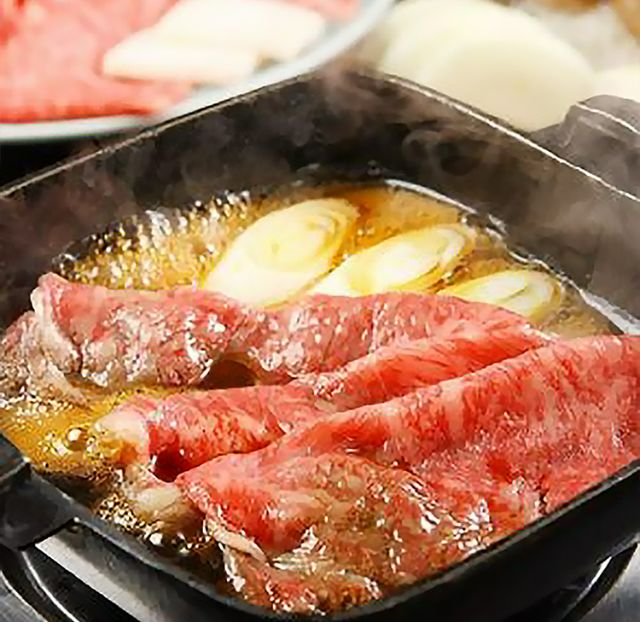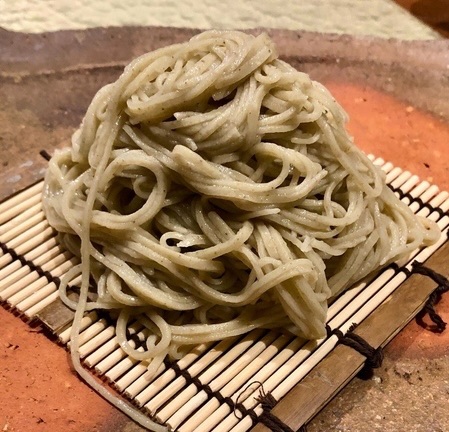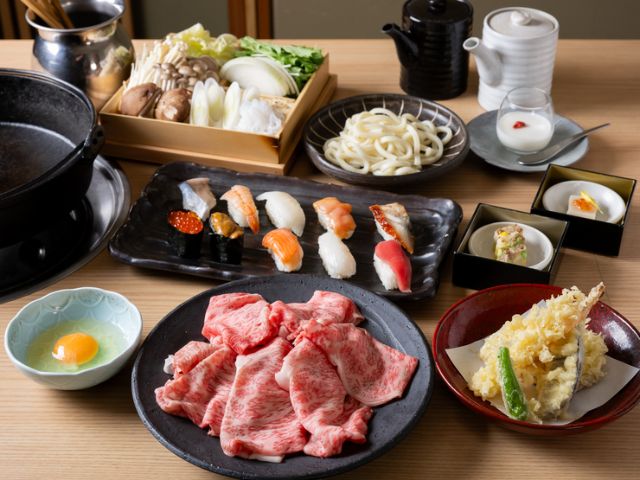All About Toshikoshi Soba: Origins, When to Eat It, and More!
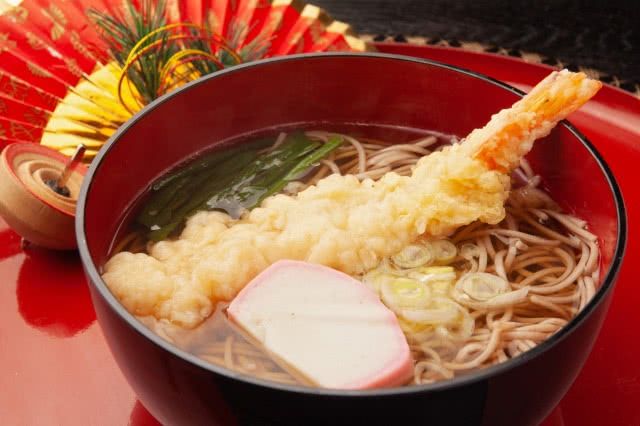
Bringing Good Luck with Soba for the Upcoming Year
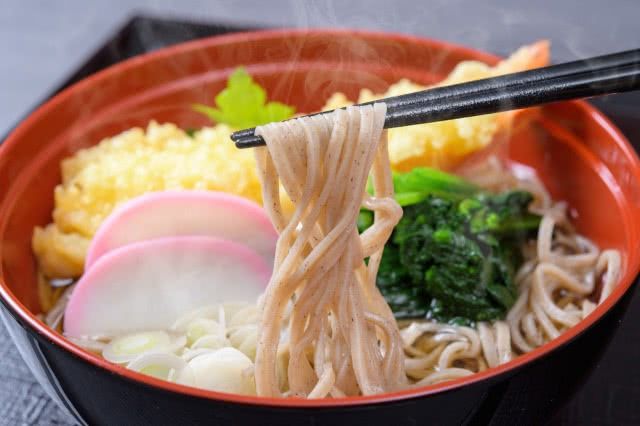

There are several reasons for eating soba noodles on New Year’s Eve.
The long, thin shape of the noodles symbolizes a wish for longevity, while the inherent resilience of buckwheat against inclement weather represents good health. And since soba is easier to cut compared to other noodles, it serves as a symbol for severing the difficulties and misfortunes of the past year.
Furthermore, in the past, some metalworkers would use kneaded balls of buckwheat flour to collect scattered gold dust. Eventually, this led to the belief that soba could bring about fortune. In Fukuoka Prefecture, people served buckwheat “mochi” cakes—said to be the precursor to toshikoshi soba—at temples even experienced an improvement in their luck, further contributing to this belief.
In essence, each bowl of soba noodles is laden with blessings, making it a "charm" filled with hopes for a happier new year.
When Is the Best Moment to Eat Toshikoshi Soba?


While there's no strict rule, it's generally advised to finish eating toshikoshi soba by the end of December 31st, as this custom is based on the notion of leaving behind any misfortunes or challenges from the current year and not carrying them into the next. Many people choose to enjoy it during the countdown to the New Year, often while listening to the Joya no Kane (New Year's Eve bells). Soba's low calorie content and easy digestibility make it a guilt-free meal, even when eaten late at night!
Some opt to have toshikoshi soba as a lunchtime treat at a restaurant while out shopping for New Year's, while others savor it leisurely at home for dinner while watching TV. It's worth noting that leaving any soba uneaten is discouraged, as it is believed that doing so may bring financial difficulties in the new year.
Toshikoshi Soba Across Japan

Soba is typically served in either a warm broth or a richly seasoned cold soup. When eating it as toshikoshi soba, feel free to choose the style that best suits your taste.
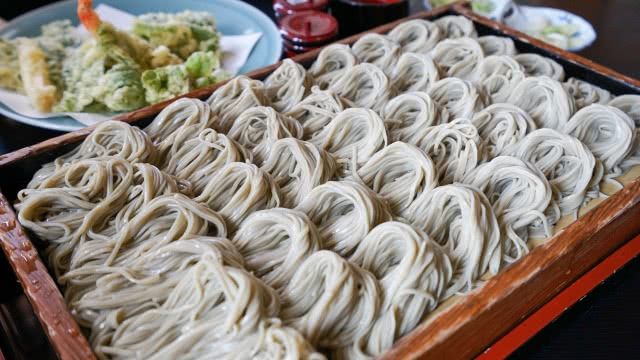
In Hokkaido and Kyoto, people savor "Nishin soba," topped with sweetened herring. Iwate is renowned for its specialty, "Wanko soba," where the noodles are served all-you-can-eat style in small bowls, while Niigata offers "Hegi soba," a type of soba noodle with seaweed incorporated into the noodles, elegantly arranged in a wooden vessel. In Fukui, "Echizen soba" is served with a generous topping of grated daikon radish, and Shimane offers "Kamaage soba," where the soba noodles are boiled and served in its cooking broth.
In Kagawa, many locals go for the regional favorite, "Sanuki udon," instead of soba. Meanwhile, in Okinawa, the unique "Okinawa soba" with regular wheat flour noodles is the preferred choice for welcoming the New Year.
Recommended Restaurants for Toshikoshi Soba
Shizuya (Ueno)
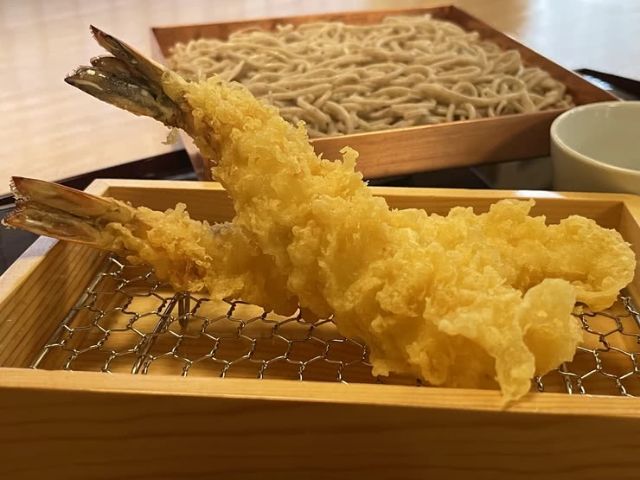
Soba, being an uncomplicated dish, places great emphasis on the quality of its ingredients. At Shizuya, they carefully select whole buckwheat from across the nation and grind it with stone mills to craft their own soba flour. The preparation is limited to the quantity needed for the day, guaranteeing that you can enjoy freshly made soba whenever you visit. This process results in visually appealing, soft, and aromatic soba noodles.
At a soba restaurant, it's considered sophisticated to enjoy "sobamae," a variety of appetizers, while savoring Japanese sake and waiting for the main soba dish. Recommended choices for sobamae include [Sobagaki], boiled dumplings made with soba flour, and the omelet roll flavored with broth [Dashimaki] (800 JPY). While soba naturally pairs well with Japanese sake, you can try it with shochu mixed with sobayu (soba cooking broth). Alternatively, pair it with wine; [Shizuya] also offers organic wines. As a satisfying finale, try their signature dish, the [Japanese Tiger Prawn Tempura/Kakesoba] (2,200 JPY).

Shizuya
Closed: Saturday, Sunday, National Holidays
Average price: [Dinner] 3,500 JPY / [Lunch] 1,500 JPY
Access: 6-minute walk from Main Exit/Asakusa Entrance of Ueno Station, 6-minute walk from Exit 3 of Naka-okachimachi Station on Hibiya Line
Address: 2-4-3, Higashi-Ueno, Daito-ku, Tokyo Map
More Details Reservation
Sotoroku (Shimbashi)
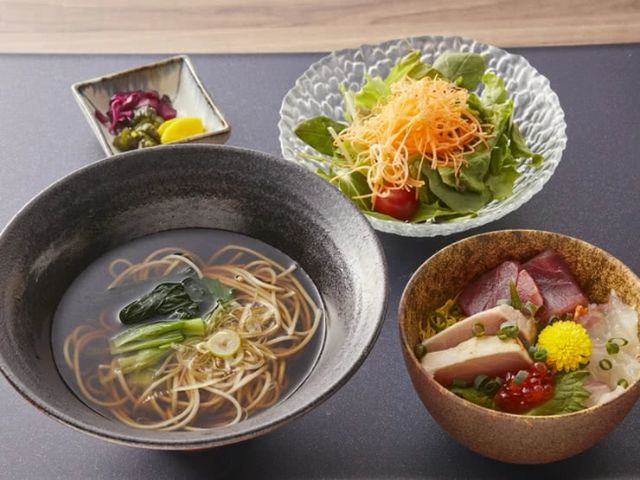
Sotoroku is a Japanese dining establishment that brings forth the allure of Kyushu’s ingredients, including Saga seaweed, Japanese bigfin reef squid, Saga and Miyazaki beef, various local vegetables like onions and lotus root, and regional citrus fruits.
After savoring Kyushu's distinctive delights such as the [Assorted Raw Horse Meat] (3,200 JPY) and [Silver-stripe Round Herring] (1,300 JPY) sashimi appetizers paired with carefully selected Japanese sake from around the country, the perfect conclusion to your meal ought to be the [Cold Soba Noodles] (1,360 JPY). The homemade soba noodles boast a refreshing flavor and smooth texture, making them a delight you could savor even when you're already full.
If you want to enjoy soba as a main course, visit at noon, as their lunch menu offerings are particularly great value for money and are sure to make you full. Some great set meal selections include the [Cold Soba Noodles & Tempura] (1,870 JPY) that comes with cold soba noodles and a small tempura rice bowl, and the [Kakesoba & Sashimi] (1,980 JPY), where you can enjoy warm soba noodles with a small seafood rice bowl.
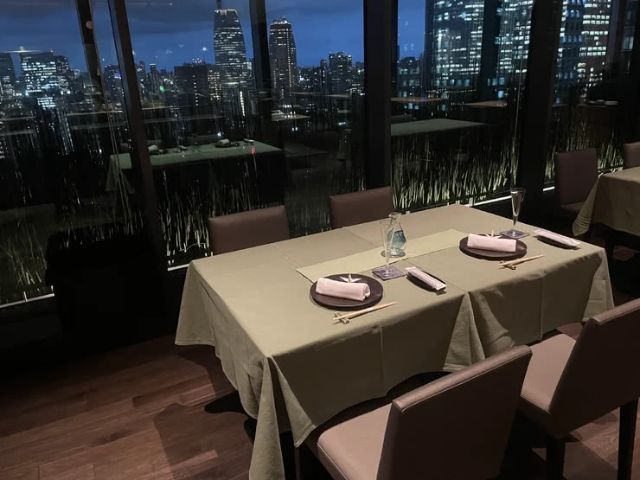
Sotoroku
Closed: None
Average price: [Dinner] 6,000 JPY / [Lunch] 1,400 JPY
Access: 4-minute walk from A5 exit of Uchisaiwaicho station
Address: 18F, THE BLOSSOM HIBIYA, 1-1-13 Shimbashi, Minato-ku, Tokyo Map
More Details Reservation
Disclaimer: All information is accurate at time of publication.
Thank you for reading our article.
Our goal is to take your culinary journey to the next level by helping you find the best restaurant. With SAVOR JAPAN, you can search and make reservations for
the Soba restaurants found in and around Tokyo that fill your needs.
Discover more Soba restaurants by area
- Tokyo Area
- Near Tokyo
- Kyoto and Osaka Area
- Hokkaido Area
- Northern Honshu (Tohoku)
- Central Honshu (Chubu)
- Western Honshu (Chugoku)
- Shikoku
- Kyushu
- Okinawa and Ryukyu Islands
Discover more restaurants to eat Japanese Cuisine by area
Related Articles
New Articles
Categories
Cuisine
- Bars (23)
-
Japanese Cuisine (675)
- Kaiseki (46)
- Nabe (19)
- Okonomiyaki (23)
- Shabu Shabu (36)
- Soba (18)
- Sushi (137)
- Tempura (19)
- Teppanyaki (46)
- Shojin Ryori (3)
- Tonkatsu (11)
- Kushiyaki (10)
- Yakitori (44)
- Sukiyaki (35)
- Japanese Cuisine (341)
- Oyster (2)
- Sashimi/ Seafood (19)
- Unagi (eel) (31)
- Motsu Nabe (offal hotpot) (6)
- Mizutaki (chicken hot pot) (3)
- Oden (8)
- Kaisendon (seafood bowl) (9)
- Udon (2)
- Taverns(Izakaya) Cuisine (123)
- Western Cuisine (42)
- Italian/French Cuisine (94)
- Yakiniku/Steak (223)
- Chinese Cuisine (26)
- Ramen (Noodles) Cuisine (25)
- Cafe/Sweets (60)
- Other Asian Cuisine (5)
- Global/International Cuisine (7)
- Alcohol (45)
- Other (11)
Area
- Shikoku (10)
- Kyoto and Osaka (344)
-
Tokyo (456)
- Tokyo (284)
- Ginza (43)
- Roppongi (21)
- Shibuya (25)
- Shinjuku (46)
- Asakusa (20)
- Ebisu (12)
- Tsukiji (10)
- Tokyo Landmarks (4)
- Ueno (23)
- Akihabara (9)
- Ikebukuro (12)
- Jiyugaoka, Denenchofu, Nakameguro (9)
- Shimokitazawa (4)
- Kichijoji (3)
- Tachikawa (1)
- Omotesando, Harajuku, Aoyama (18)
- Akabane (1)
- Kagurazaka (4)
- Akasaka (10)
- Odaiba (1)
- Tsukishima, Harumi, Toyosu (3)
- Near Tokyo (100)
- Okinawa and Ryukyu Islands (58)
- Hokkaido (124)
- Northern Honshu (Tohoku) (31)
- Central Honshu (Chubu) (144)
- Western Honshu (Chugoku) (32)
- Kyushu (92)
Archives
- December 2025(8)
- November 2025(4)
- October 2025(3)
- September 2025(6)
- August 2025(11)
- July 2025(19)
- June 2025(18)
- May 2025(34)
- April 2025(43)
- March 2025(30)
- February 2025(36)
- January 2025(26)
- December 2024(69)
- November 2024(31)
- October 2024(15)
- September 2024(39)
- August 2024(65)
- July 2024(31)
- June 2024(54)
- May 2024(61)
- April 2024(28)
- March 2024(31)
- February 2024(42)
- January 2024(32)
- December 2023(20)
- November 2023(5)
- October 2023(11)
- September 2023(7)
- August 2023(18)
- July 2023(8)
- June 2023(8)
- May 2023(18)
- April 2023(15)
- March 2023(1)
- January 2023(1)
- April 2022(2)
- March 2022(2)
- February 2022(1)
- January 2022(1)
- July 2021(1)
- March 2021(1)
- February 2021(1)
- December 2020(1)
- October 2020(1)
- September 2020(2)
- August 2020(10)
- July 2020(6)
- June 2020(9)
- May 2020(11)
- April 2020(8)
- March 2020(8)
- February 2020(13)
- January 2020(9)
- December 2019(24)
- November 2019(8)
- August 2019(14)
- July 2019(15)
- June 2019(18)
- May 2019(17)
- April 2019(16)
- March 2019(22)
- February 2019(22)
- January 2019(26)
- December 2018(34)
- November 2018(40)
- October 2018(32)
- September 2018(11)
- August 2018(8)
- July 2018(6)
- June 2018(9)
- May 2018(10)
- April 2018(21)
- March 2018(74)
- February 2018(39)
- January 2018(26)
- December 2017(59)
Keywords
- Omakase
- Accessible
- Affordable
- All-You-Can-Eat
- Amazing Scenery
- anime
- Art
- Autumn
- Awards
- Beer Gardens
- Breakfast
- Chef Recommendations
- Cherry Blossoms
- Chinese
- Close To Station
- Condiments
- Counter
- Coupon
- Crab
- Culture
- Dassai
- Dates
- delivery
- Early Summer
- Editor's Recommendation
- English Available
- Event
- Expo
- Fall Leaves
- Family-Friendly
- Famous Restaurant
- Famous Tourist Spot
- Fast Food
- festival
- fireworks
- Flower Farm
- Free Wi-Fi
- French
- Great Location
- Guide
- Hibachi
- hotpot
- How To
- hydrangea
- Hygiene
- Illumination
- Italian
- Izakaya
- Japanese
- Japanese alcohol
- jingisukan
- Kaiseki
- Kappo
- Kushiage
- Kushikatsu
- Kyoto
- Late-Night
- Lunch
- Manners
- matsusakagyu
- Michelin
- mizutaki
- Model Course
- monjayaki
- motsunabe
- Mt.Fuji
- Multilingual Menus
- Nabe
- Narita Airport
- New Year
- Ninja
- Noodle
- Oden
- Okonomiyaki
- omotenashi
- Onsen
- Osaka
- Osaka Station
- Photogenic Site
- pizza
- PR
- Private Room
- Ramen
- ranking
- Recipe
- Regional Cuisine
- Resort
- Rice Bowl Dish (Donburi)
- sacred places
- Sake
- Sakura
- Sashimi
- sea urchin
- Setouchi Area
- Shabu Shabu
- sightseeing
- Signature Dish
- Soba
- Solo Diners Welcomed
- Spicy Food
- Spring
- Steak
- Summer
- Sunflower
- Sushi
- takeout
- Teppanyaki
- Terrace Seating
- Tokyo
- Tokyo Experiences
- Tokyo Skytree
- Tokyo Tower
- unagi
- UNESCO
- Vegan
- Vegetarian
- Wagyu
- What Popular Gourmet Sites Recommend
- Whisky
- Wine Bar
- Winter
- Wisteria
- Workshop
- World Heritage Site
- World Writers
- Yakiniku
- Yoshoku
- Yuba
- Zen
Discover Restaurants By Area
-
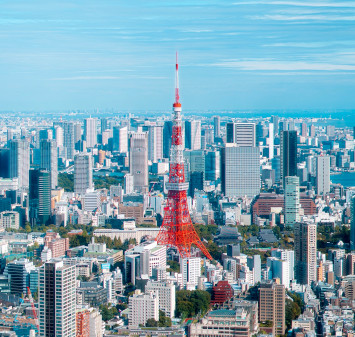
Tokyo Area
Japan's largest city, Tokyo, is the center of culinary culture in Japan. Countless Tokyo restaurants serve every kind of food imaginable and the Toyosu fish market keeps restaurants stocked with the nation's finest fish.
-

Near Tokyo
Coastal areas, mountains and valleys surrounding Tokyo are bursting with tourist destinations, such as hot springs and ski slopes, where many unique foods are only available locally.
-
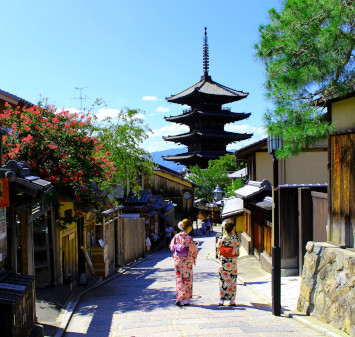
Kyoto and Osaka Area
The cities of Kyoto and Osaka, together with their surrounding areas, have greatly influenced Japan's culinary culture since the 7th Century. The region is renowned for its entertainment, Kobe beef, and wide-ranging traditional dishes.
-
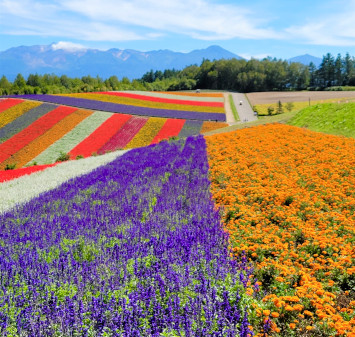
Hokkaido Area
The island of Hokkaido is home to wide-ranging produce of the finest quality, such as rice, meat, vegetables, fish and fruit. Popular dishes from Hokkaido include robatayaki (food slowly roasted on skewers) and Sapporo miso ramen.
-
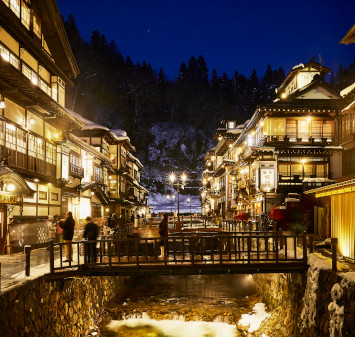
Northern Honshu (Tohoku)
The northern end of Japan's main island, Honshu, is renowned for its seasonal fruit and vegetables, nation-leading harvest of fish (especially tuna from Ohma), and delicious beef from Yonezawa, Sendai and Yamagata.
-
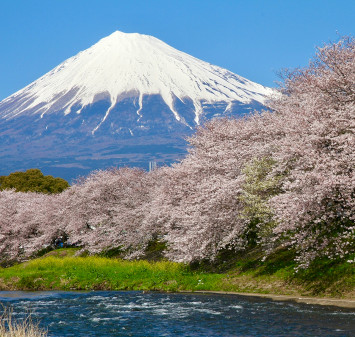
Central Honshu (Chubu)
Chubu is in the center of Japan's main island, Honshu, and its culinary culture reflects its position between Japan's western and eastern halves. Delicious Hida beef, world-famous Mount Fuji and many acclaimed sake breweries are in Chubu.
-

Western Honshu (Chugoku)
Chugoku, on the southwest of Japan's main island, is rich with diverse produce. Many of its products are praised as Japan's best, including Matsuba crabs from Tottori and oysters from Hiroshima. Its pears and muscats are also top grade.
-
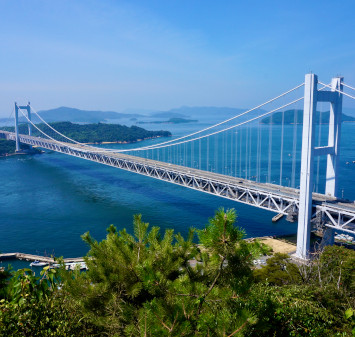
Shikoku
The mild climate of Shikoku is ideal for growing citrus fruit such as sudachi. Shikoku is also famous for Sanuki udon noodles, huge yields of tiger prawn from Ehime Prefecture and the best torafugu (tiger globefish) in the country.
-
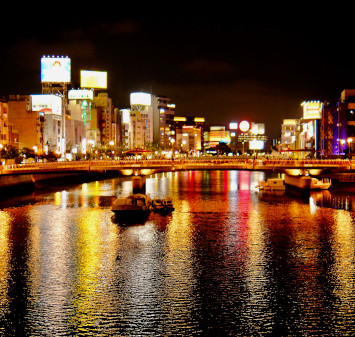
Kyushu
Western culture was first introduced to Japan through Kyushu, Japan's third largest island, where the influence of Portuguese and other western cuisine influenced the creation of a colorful culinary tradition.
-
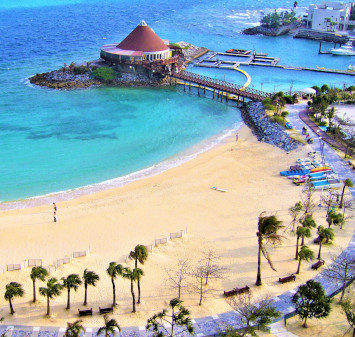
Okinawa and Ryukyu Islands
Okinawa, Japan’s southernmost prefecture, is a treasure trove of distinctive dishes and drinks that have become popular throughout Japan, including Okinawa soba, unique sushi toppings and Awamori distilled liquor.
